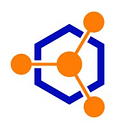Revolutionizing Drug Discovery with Large Molecule Bioanalysis Solutions
What are large-molecule pharmaceuticals?
Large molecule pharmaceuticals or biologics are specialized therapies that target specific genotypes or protein receptors. They differ significantly from conventional chemically synthesized drugs due to their large and complex molecular structures, which make them challenging to identify and characterize. Because of their size and complexity, biologics are typically administered via injection or infusion rather than orally. These products are derived from various natural sources and produced through innovative biotechnological methods. Biologics encompass numerous products, including gene therapies, vaccines, recombinant therapeutic proteins, and blood components.
According to the FDA, despite the complexities and challenges associated with their development, biologics can deliver some of the most effective treatments available, especially for medical conditions that lack alternative therapeutic options. Given their heat sensitivity and susceptibility to microbial contamination, stringent aseptic techniques are crucial at every stage of biologics manufacturing. Biologics are regulated by the FDA’s Center for Biologics Evaluation and Research (CBER), and its mission is to protect public health by ensuring that biological products meet rigorous standards of safety, efficacy, and quality and are made accessible to individuals in need. This regulatory oversight is critical in maintaining the high standards required for biologics, given their potential to revolutionize treatment for various complex and severe medical conditions.
What is the process of large molecule drug discovery:
Large molecule therapeutics are at the forefront of modern drug development, especially in tackling complex diseases like cancer, where precision targeting is crucial to destroying cancer cells without harming healthy tissue. Unlike small molecules, which are chemically synthesized, low in molecular weight, and often analyzed through small molecule bioanalysis techniques, large molecules — such as monoclonal antibodies and recombinant proteins — are biologics produced in living systems like mammalian cells, offering higher specificity in targeting disease pathways.
The development of these therapeutics is intricate, requiring advanced bioanalytical solutions tailored for large molecules, particularly in assessing stability and efficacy across development stages. Key phases include target identification, where network pharmacology and systems biology enable multi-target strategies; cell line development (CLD) to optimize scalability and stability; and both upstream and downstream processing, which focus on cell growth, purification, and ensuring product quality through real-time monitoring. Advanced large molecule bioanalysis solutions, such as those used for anti-drug antibody (ADA) assessment during clinical trials, are critical for detecting immune responses and ensuring therapeutic safety and efficacy.
Formulation efforts maintain stability throughout production, storage, and delivery, while regulatory processes, including Investigational New Drug (IND) applications, rigorously evaluate the consistency and safety of these therapeutics. Despite the complexities involved, bioanalysis and bioreactor technology innovations continue to drive large-molecule drugs toward becoming indispensable treatments for complex diseases, showcasing the industry’s commitment to advancing precise, high-quality, and accessible therapies.
What techniques are used in the Large Molecule Bioanalysis?
The bioanalysis of large molecule therapeutics encompasses several essential studies — pharmacokinetics (PK), toxicokinetics (TK), pharmacodynamics (PD), immunogenicity assays, and biomarker evaluations — all of which provide crucial insights for drug development and regulatory approval. PK studies track the drug’s presence in serum or plasma, determining bioavailability and clearance through ligand binding assays (LBAs) or mass spectrometry to gauge the therapeutic’s duration and intensity. TK studies, often conducted at higher doses, assess safe exposure levels, while PD studies measure the drug’s effects on biological targets and signaling pathways. Immunogenicity assays are particularly vital for cancer-targeting biologics, as these compounds may provoke immune reactions, and biomarker validation in both preclinical and clinical phases ensures adherence to stringent standards for specificity, sensitivity, and reproducibility, aligning with FDA bioanalytical validation guidelines.
Must Read: Common Types of Assays Conducted in Assay Labs
Bioanalysis methods for large molecules span in vitro, ligand binding, mass spectrometry, single-molecule, and flow cytometry assays, each with distinct applications. In vitro binding and cell-based assays determine biological activity, while LBAs (such as Gyrolab and MSD) monitor drug-target binding in PK/PD studies and circulating drug levels in toxicology. Mass spectrometry, especially when paired with chromatography (LC-MS or GC-MS), provides high selectivity for analyzing monoclonal antibodies and antibody-drug conjugates. At the same time, single-molecule analysis platforms like Simoa offer exceptional sensitivity for protein detection. Additionally, flow cytometry, widely used in immune profiling, is increasingly valuable for assessing immune-modulating therapies like CAR-T cells. As bioanalysis methods continue to evolve, integrating established techniques with innovative platforms will enhance the precision and scope of large molecule therapeutic assessments.
Conclusion:
The distinct characteristics of small and large molecules require tailored bioanalytical approaches critical for guiding effective drug development. Small molecules, with their simpler structures and synthetic origins, make up most approved drugs, and their bioanalysis focuses on quantifying concentration and metabolites. In contrast, large molecules are complex biopharmaceuticals that show promise in treating challenging diseases like cancer and autoimmune disorders. These biologics require advanced bioanalytical techniques for their intricate structures and potential immunogenicity, especially in preclinical and clinical phases where anti-drug antibody (ADA) testing assesses immune responses. Understanding these bioanalytical distinctions is essential for planning robust testing strategies to ensure therapeutic safety and efficacy across small and large-molecule drugs.
